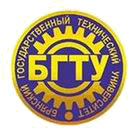Moskva, Moscow, Russian Federation
Tomsk, Tomsk, Russian Federation
Tomsk, Tomsk, Russian Federation
CSCSTI 50.07
Russian Library and Bibliographic Classification 3297
The paper proposes the use of visualization tools as an independent or complementary tool designed to solve problems related to the planning and audit of the results of various processes. The advantages arising as a result of transition to attraction of visual perception for formation of the General idea of process and its results existing in the form of heterogeneous data are shown. The use of visualization tools to find contradictions and errors made at the stage of process design is proposed. The proposed tool for visualizing an educational environment is supplemented by an ability to save options for solving planning problems and for corresponding real results. This creates conditions for a planning search for periods of varying lengths, during which the search and evaluation of factors that have necessary effect on the achieved results of the educational program are carried out.
visual analytics, visual model, data analysis, visual interpretation, visual perception
1. Batch A., Elmqvist N. The Interactive Visualization Gap inInitial Exploratory Data Analysis. // IEEE Transactions onVisualization and Computer Graphics, 2018, Vol. 24, Issue1, pp. 278-287. doi:https://doi.org/10.1109/TVCG.2017.2743990
2. Blascheck T. [et al.]. VA2: A Visual Analytics Approachfor Evaluating Visual Analytics Applications // IEEETransactions on Visualization and Computer Graphics,2016, Vol. 22, Issue 1, pp. 61-70. doihttps://doi.org/10.1109/TVCG.2015.2467871
3. Cano S. [et al.]. A Visualization and Human-ComputerInteraction Proposal in the Context of PronunciationInformation // IEEE Revista Iberoamericana de Tecnologiasdel Aprendizaje, 2016, Vol. 11, Issue 1, pp. 12-17. doihttps://doi.org/10.1109/RITA.2016.2518440
4. Chen C. Top 10 Unsolved Information VisualizationProblems // IEEE Computer Graphics and Applications,2005, Vol. 25 Issue 4, pp. 12-16. doihttps://doi.org/10.1109/MCG.2005.91
5. Chen M., Golan A. What May Visualization ProcessesOptimize? // IEEE Transactions on Visualization andComputer Graphics. 2016, Vol. 22, Issue 12, pp. 2619-2632. doi:https://doi.org/10.1109/TVCG.2015.2513410
6. Crouser R.J. [et al]. Toward Theoretical Techniques forMeasuring the Use of Human Effort in Visual AnalyticSystems // IEEE Transactions on Visualization andComputer Graphics, 2017, Vol. 23, Issue 1, pp. 121-130.doi:https://doi.org/10.1109/TVCG.2016.2598460
7. Dasgupta A. [et al].. Familiarity Vs Trust: A ComparativeStudy of Domain Scientists’ Trust in Visual Analytics and Conventional Analysis Methods. // IEEE transactions onvisualization and computer graphics, 2017, Vol. 23, Issue 1,pp. 271-280. doi:https://doi.org/10.1109/TVCG.2016.2598544
8. Matsushita M., Kato T. Interactive Visualization Methodfor Exploratory Data Analysis // Proceedings FifthInternational Conference on Information Visualisation,2001. doi:https://doi.org/10.1109/IV.2001.942128
9. Pirolli P.L. Information Foraging Theory: AdaptiveInteraction with Information. Oxford University Press,2007.
10. Podvesovskii A.G., Isaev R.A. Visualization Metaphors forFuzzy Cognitive Maps // Scientific Visualization, 2018,Vol. 10, No. 4, pp. 13-29. doi:https://doi.org/10.26583/sv.10.4.02
11. Zakharova A.A. [et al].. Visual modeling in an analysis ofmultidimensional data // IOP Conf. Series: Journal ofPhysics: Conf. Series, 2018, Vol. 944, 012127. doihttps://doi.org/10.1088/1742-6596/944/1/012127
12. Zakharova A.A., Vekhter E.V., Shklyar A.V. TheApplicability of Visualization Tools in the Meta-Design ofan Educational Environment // European Journal ofContemporary Education, 2019. Vol. 8, No. 1, pp. 43-51.doi:https://doi.org/10.13187/ejced.2019.1.43
13. Vieira C., Parsons P., Byrd V. Visual learning analytics ofeducational data: A systematic literature review andresearch agenda // Computers and Education, 2018, Vol.122, pp. 119-135. doi:https://doi.org/10.1016/j.compedu.2018.03.018





